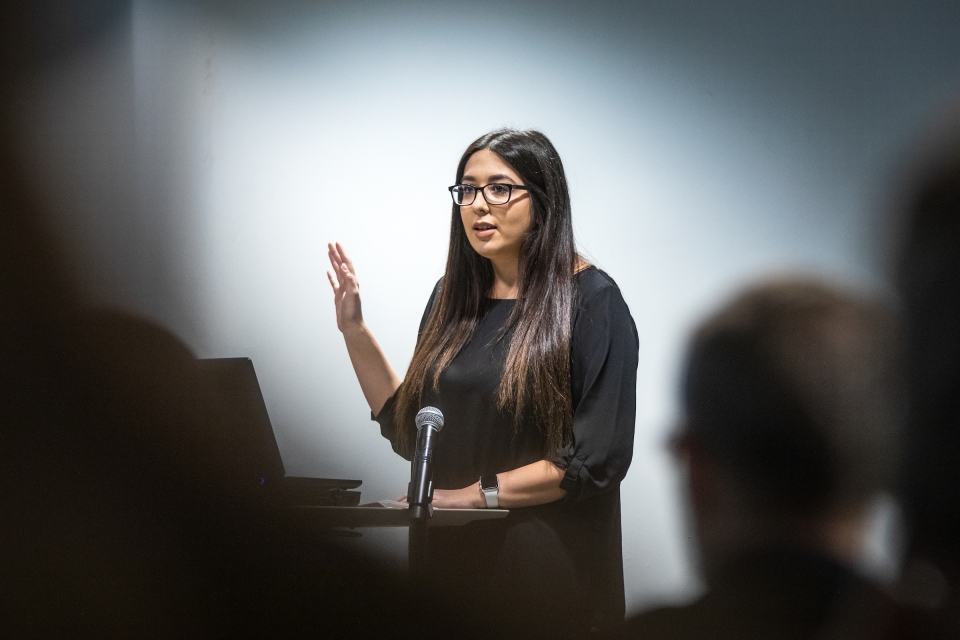
New analysis of firearm deaths by ASU finds most victims are suicides
More than 3,100 people in Arizona died from firearms from 2015 to 2017 and 71% of those deaths were suicides, according to a new report released by Arizona State University.
The report, presented Wednesday by the Morrison Institute for Public Policy at ASU, includes a detailed breakdown of types of firearm deaths and the victims, with the intent to use the data to prevent gun violence in Arizona.
“This is information that’s crucial to our understanding of firearm deaths in Arizona,” said Melissa Kovacs, associate director for research for the Morrison Institute, who is co-author of the report.
“What we’re talking about might feel foundational or basic and might raise more questions than it answers, and we have a lot of questions ourselves.”
Among the findings:
• Over the three-year period studied, from Jan. 1, 2015, to Dec. 31, 2017, the number of firearm deaths increased nearly 18%.
• Of the total 3,188 firearms deaths, 71% were suicide, 23% were homicide, 5% were undetermined and 1% were unintentional.
• There was a 14% increase in firearm suicides in the three-year span, from 702 to 798. The rate of firearm suicide per 100,000 people increased from 10.6 to 11.7.
• There was a 27% increase in firearm homicides in the three-year period, from 208 to 265. The rate of firearm homicides per 100,000 people increased from 3.1 to 3.9.
• Firearms were used in 59% of all suicides and in 69% of all homicides in Arizona during the period.
“You can see the numbers have gone up but Arizona’s population has increased in this time as well,” Kovacs said, noting that it’s important to consider the rate per 100,000 and not just the numbers.
The report is a collaboration between the Morrison Institute and the Center for Violence Prevention and Community Safety, both in the Watts College of Public Service and Community Solutions at ASU. The center houses the Arizona Violent Death Reporting System, which draws data from law-enforcement agencies, death certificates, medical examiner reports and other sources, such as hospitals. In 2015, the state system began a partnership with a national reporting system that’s part of the Centers for Disease Control, with the goal of creating a set of high-quality data to help prevent violence.

Melissa Gutierrez, a graduate student in the School of Criminology and Criminal Justice, presents part of the report on firearm deaths in Arizona. She's worked on the project since she was an undergraduate. Photo by Charlie Leight/ASU Now
Besides homicides and suicides, the researchers also looked at the 42 unintentional firearm deaths in Arizona in the time period. There were five in 2015, 12 in 2016 and 25 in 2017.
“These represent pretty notable increases and this is something we’re all hoping is not a trend,” Kovacs said.
Three-quarters of the unintentional victims were male, as were 90% of the shooters. The median age of the victims was 21, and of the shooters, 24. In nearly two-thirds of the cases, the shooter was playing with, displaying or cleaning the gun. There was one unintentional death related to hunting and none related to target shooting.
While there is a big set of data, it’s filled with holes, for two main reasons: poor reporting by the participating agencies or nonparticipation, according to David Choate, senior research analyst at the Center for Violence Prevention and Community Safety.
Significantly, Maricopa County Sheriff Paul Penzone withdrew his agency’s participation in the Arizona Violent Death Reporting System when he took office in 2017. The Arizona Department of Corrections and the FBI also don’t participate.
“We’re also hampered by the quality of information,” Choate said.
“When you read a law enforcement report and the entire narrative summary says, ‘See Medical Examiner’s report,’ we’re not getting a lot of information. We get a substantial number of reports with such thin information that we’re unable to code anything.”
That narrative information is important to show the context of violence, in order to find ways to decrease it. For example, in 28% of homicides, the relationship between the victim and the suspect is unknown and in 27% of homicides, the type of gun used is unknown.
The presentation also included policy recommendations by Charles Katz, director of the Center for Violence Prevention and Community Safety.

Charles Katz, director of the Center for Violence Prevention and Community Safety at ASU, discussed his policy recommendations for reducing firearm deaths in Arizona, including launching an education program to encourage people to lock up their guns. Photo by Charlie Leight/ASU Now
“One of the things we’re repeatedly asked for is our recommendations, whether it be for statutes, ordinances, policies or practices, and most of the time, we stay away from it because it gets in the way of our primary role of shedding light on what the real problems are,” he said.
“But we have been repeatedly requested to make recommendations and we’re starting to move in that direction very conservatively,” said Katz, who also is a professor in the School of Criminology and Criminal Justice.
Katz’s 10 recommendations for communities to consider, most of which have been based on randomized control trials, are:
1. Expanding the National Integrated Ballistics Information Network, which allows law enforcement agencies to more efficiently identify guns that are used repeatedly in violent crimes.
2. Use a “focused deterrence” strategy to fight violent crime, which identifies the “worst of the worst” offenders, who are provided with intervention and social services with the caveat that they will be prosecuted quickly if they stray. “It’s one of the most well researched programs out there that shows there’s at least a medium effect.”
3. Use “Operation Peacekeeper,” a program in which “violence interrupters” work on the streets.
4. Consider “hot spot” policing, in which resources are focused on small areas where violence is the worst.
5. Create homicide review commissions, which gather community members quickly after a homicide to review information and identify trends.
6. Launch education campaigns for safe gun storage. “Perhaps the strategy that is most effective in reducing youth suicide is education campaigns for how to deal with firearms,” Katz said. “The only way youths can get the firearm is through a parent or friend where the firearm is not secure.”
7. Boost child-access prevention laws to increase consequences for unsecured firearms.
8. Increase background checks for gun buyers.
9. Revoke stand your ground laws because research shows that states that adopt these laws see a small increase in homicides.
10. Increase research on violence in Native American communities.
“In some years that we’ve examined the data, when you combine homicides and suicides, American Indians have the highest rate of violent death in the state,” Katz said.
But no one is sure of the Native American population, both on and off reservations. Census data varies widely from tribal counts, he said.
In addition, tribal agencies do not participate in the Arizona Violent Death Reporting System.
“We’ve had to call each nation and try to collect that information and we’ve just made a small dent,” he said.
“The bottom line is that when you call them and ask for it, they say no. It’s their data and they’re permitted to share it with whomever they like.”
Even with all the numbers, the researchers were able to keep the bigger picture, according to David Schlinkert, senior policy analyst for the Morrison Institute, who is co-author of the report with Kovacs.
“Sometimes, when we aggregate quantitative data, you’re less able to see what you’re really talking about. Melissa and I have been looking at this data for 10 months now, and the stories in there are about people,” he said.
“The deaths are violent and it’s not the most pleasant thing to think about. But when we say that number — 3,188 — those are all individual people with lives and stories.”
Top photo: Melissa Kovacs, associate director for research at the Morrison Institute for Public Policy, presents the report "Firearm Deaths in Arizona, 2015–2017" at the Downtown Phoenix campus on Jan. 29. Photo by Charlie Leight/ASU Now